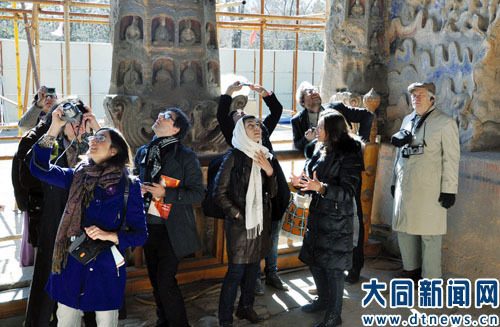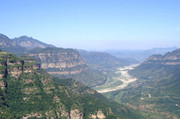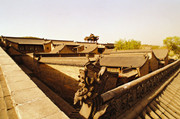Experts study Yungang Grottoes’ music-related carvings
By Dong Jirong ( chinadaily.com.cn )
Updated: 2012-11-02
 |
|
More than 50 Chinese and foreign music experts toured Datong’s Yungang Grottoes on Oct 31. |
More than 50 Chinese and foreign music experts toured Datong’s Yungang Grottoes on Oct 31.
The visitors were members of the Study Group on Iconography of the Performing Arts of the International Council for Traditional Music (ICTM). They headed for Datong after participating in the 11th group symposium from Oct 26 to 30 in Beijing.
Among the group were professors from Chinese mainland, Taiwan, France, England, Germany, the United States and India. There were also postgraduates from the China Conservatory of Music and Central Conservatory of Music, both based in Beijing.
"In addition to ancient musical instruments or written texts, images can also provide abundant musical information. As one of the famous ancient capital cities in China, Datong has an abundant music iconology historical heritage which can be seen in tombs, grottoes or other forms dating back to the Northern Wei Dynasty (AD 386-534)," said a member of the ICTM Study Group.
The Yungang Grottoes are 16 kilometers southwest of Datong. The site is one of the three most famous grottoes in China, with the other two being Longmen in Henan province and Mogao in Gansu province. The first grottoes in the area were built in the Northern Wei Dynasty, when Datong served as the capital, then known as Pingcheng.
Carvings in the Yungang Grottoes depict musical instruments and dance performances that mirror the multi-culture blending in ancient China. According to a survey, there are 22 caves with musical instrument carvings, 500 pieces in total, with 27 kinds of instruments and more than 60 group performance carvings.




